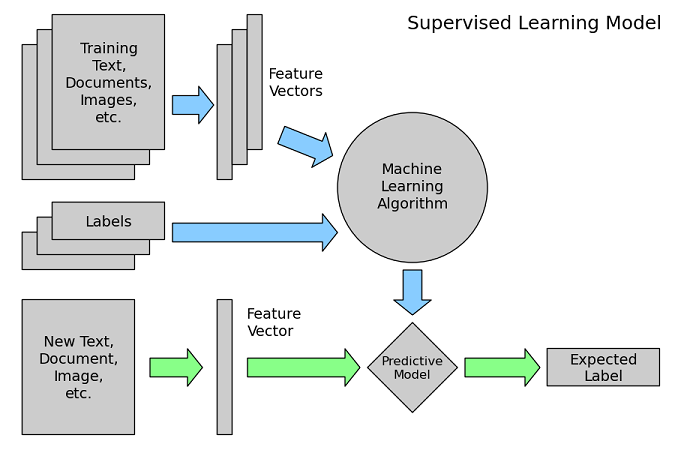
Building Machine Learning Systems with Python
Machine Learning is the subfield of computer science that gives computers the ability to learn without being explicitly
programmed. Machine Learning explores the study and construction of algorithms that can learn from and make predictions on data.
Machine learning is employed in a range of computing tasks where designing and programming explicit algorithms is infeasible;
example applications include spam filtering, detection of network intruders or malicious insiders working towards a data breach ,
optical character recognition (OCR) , search engines and computer vision .
Within the field of data analytics , machine learning is a method used to devise complex models and algorithms that lend
themselves to prediction; in commercial use, this is known as predictive analytics . These analytical models allow
researchers, data scientists, engineers, and analysts to "produce reliable, repeatable decisions and results" and
uncover "hidden insights" through learning from historical relationships and trends in the data.
Machine learning tasks are typically classified into four broad categories, depending on the nature of the learning "signal"
or "feedback" available to a learning system. These are:
- Supervised Learning:
- Unsupervised Learning:
- Semi-supervised Learning:
- Reinforcement Learning:
The computer is presented with example inputs and their desired outputs, given by a "teacher", and the goal is to learn a general rule that maps inputs to outputs.
No labels are given to the learning algorithm, leaving it on its own to find structure in its input. Unsupervised learning can be a goal in itself (discovering hidden patterns in data) or a means towards an end ( feature learning ).
Between supervised and unsupervised learning is semi-supervised learning, where the teacher gives an incomplete training signal: a training set with some (often many) of the target outputs missing.
A computer program interacts with a dynamic environment in which it must perform a certain goal (such as driving a vehicle or playing a game against an opponent). The program is provided feedback in terms of rewards and punishments as it navigates its problem space.
Here, we are only focused on Supervised Learning approach, which is most commonly used technique in machine learning.
Classification machine learning models can be validated by accuracy estimation techniques like the Holdout method ,
which splits the data in a training and test set (conventionally 2/3 training set and 1/3 test set designation) and
evaluates the performance of the training model on the test set . In comparison, the N-fold-cross-validation method randomly
splits the data in k subsets where the k-1 instances of the data are used to train the model while the kth instance is used
to test the predictive ability of the training model. In addition to the holdout and cross-validation methods, bootstrap ,
which samples n instances with replacement from the dataset, can be used to assess model accuracy.In addition to accuracy,
sensitivity and specificity (True Positive Rate: TPR and True Negative Rate: TNR, respectively) can provide modes of model
assessment. Similarly, False Positive Rate (FPR) as well as the False Negative Rate (FNR) can be computed. Receiver operating
characteristic (ROC) along with the accompanying Area Under the ROC Curve (AUC) offer additional tools for classification
model assessment. Higher AUC is associated with a better performing model.
Here is the step-by-step process to build a machine learning system with Python using Scikit-learn . These following steps are also necessary to develop a ML Systems using other ML paradigms (i.e. Unsupervised, Semi-supervised and Reinforcement).
I hope, you will enjoy to read this post. Please, feel free to add comments about your queries, I would like to answers them.